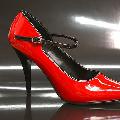คืนค่าการตั้งค่าทั้งหมด
คุณแน่ใจว่าต้องการคืนค่าการตั้งค่าทั้งหมด ?
ลำดับตอนที่ #9 : Rosin & Sound
Why Rosin?
New viola bows often do not produce any sound because they need rosin.
Rosin is extremely important because it provides the bow hair with friction in order to produce a sound when the bow is pulled across the viola strings.
Without rosin, the bow will slide across the viola strings and produce a faint whispery sound (or no sound at all).
Rosin comes in hard, round or oblong "cakes" of resin.
Rosin instructions:
Before applying rosin, tighten the bow hairs by gently turning the tension screw (avoid over tightening).
Place the bow hairs flat on the rosin at the "frog" of the bow (near the bottom where the tension screw is), and gently rub the bow hairs up and down a few times (as if scrubbing a small spot on the floor).
Then, draw the bow hairs straight across the rosin until the tip of the bow is reached. Repeat the same gentle scrubbing motion at the tip of the bow, and pull the flat bow hairs back to the frog again.
Repeat this process across the full length of the bow several times.
After each playing session, use a soft, dry cloth to remove rosin dust from the strings and body of the instrument.
Rosin test:
There aren't specific requirements for how often or how long to rosin a bow, but there is a simple test to determine if the bow has enough rosin: using the back of your thumbnail, pull it sideways across the hair of the bow (under the bow hair, near the frog).
If a small puff of rosin can be seen, the bow has enough rosin. Never use your fingers to test if the bow has enough rosin or the natural oil from your fingers will get on the hair of the bow and cause the bow to slide even more.
Too much rosin can produce a raspy, scratching sound, and can result in rosin caking the strings.
Additional sound guidelines:
Key elements in producing a good, solid tone on the viola are:
- Sufficient pressure while drawing the bow across the string.
- Proper placement of the bow in relation to the bridge.
- Speed of the bow.
If you are a beginning violist, and are having difficulties producing a good tone on your viola, consult your viola teacher. A viola teacher is the best person to help beginning violists develop a full, rich sound.


ความคิดเห็น